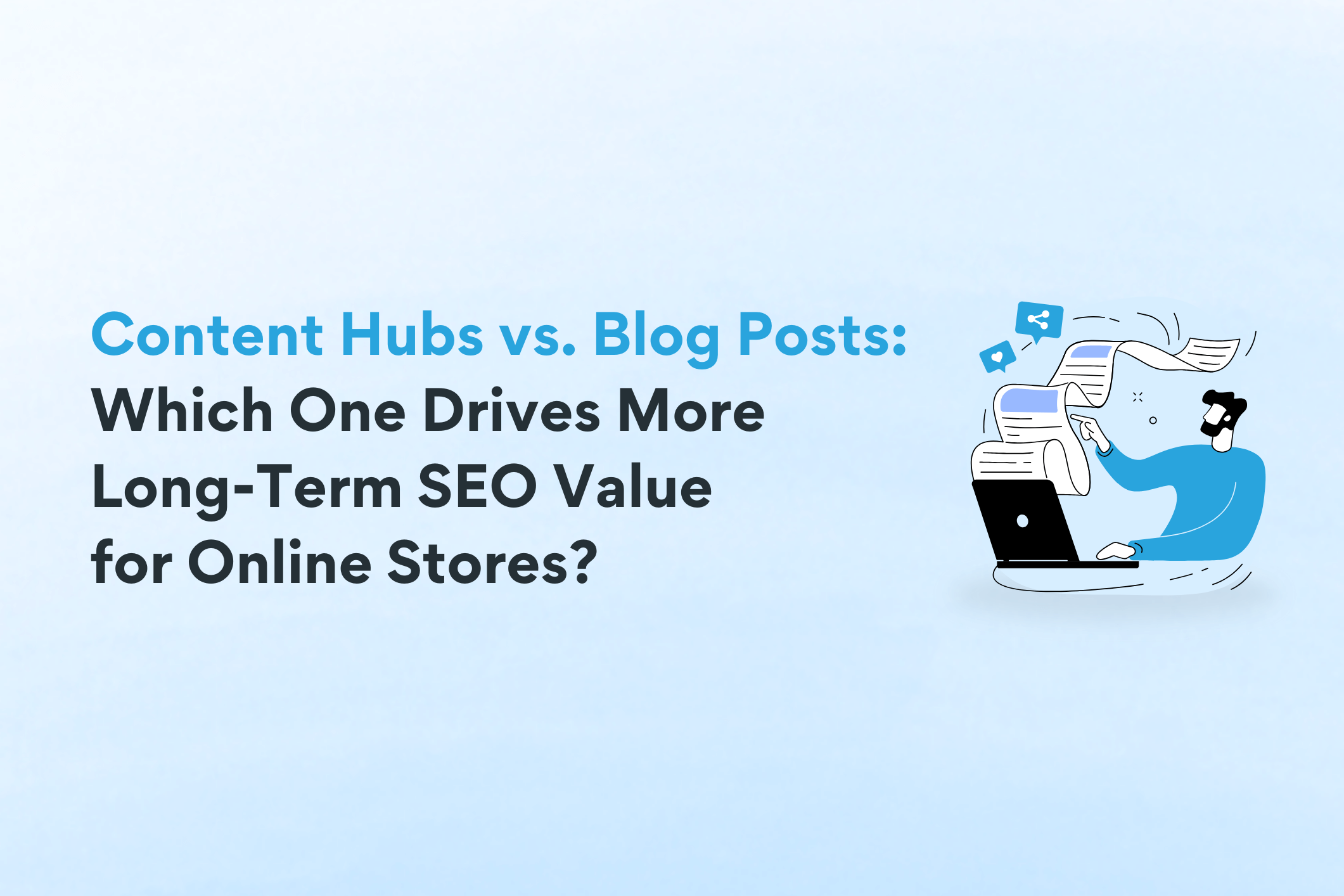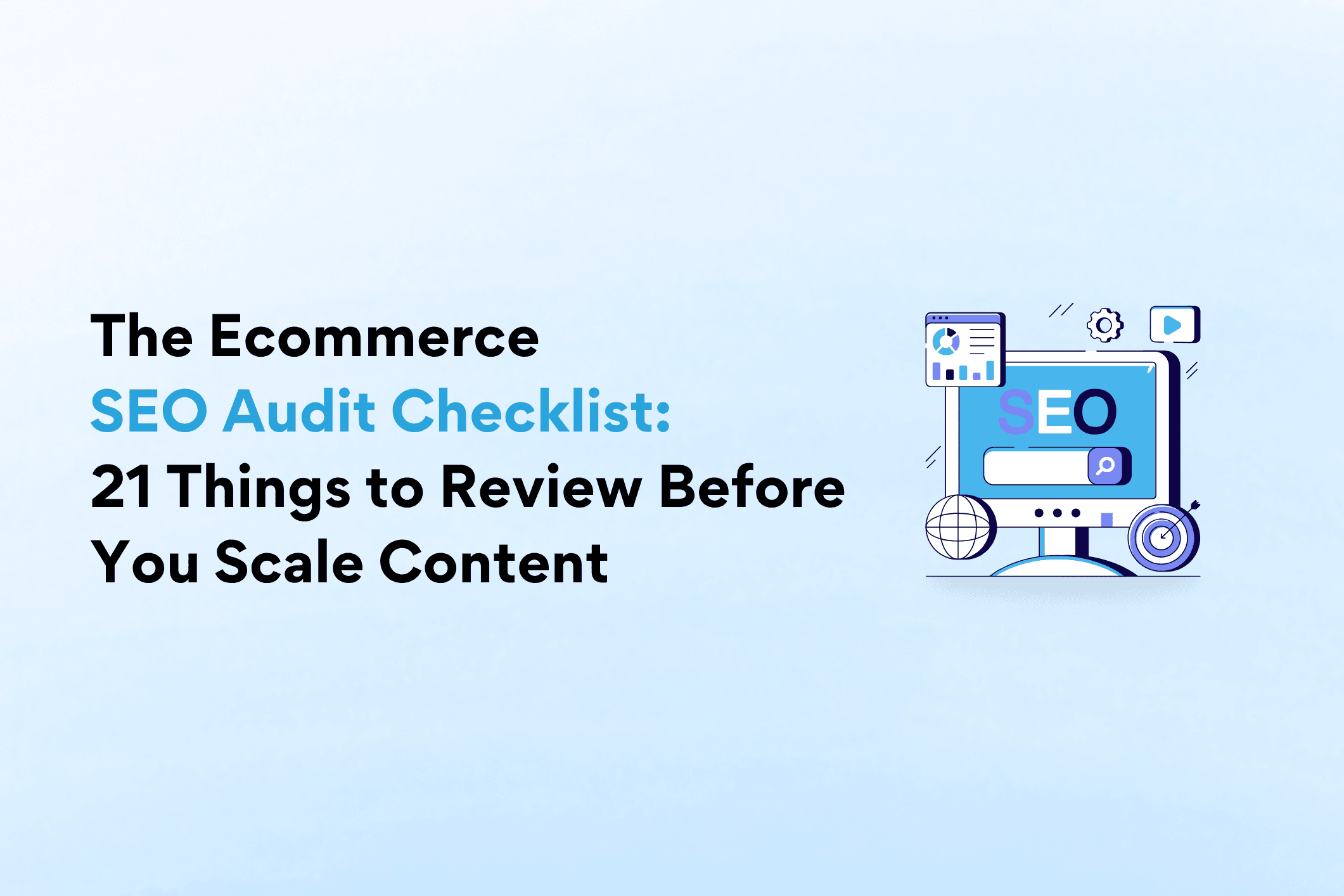If you’ve been investing in SEO for your ecommerce brand, you’ve likely faced this question more than once: Should we build a blog post or go all-in on a content hub? On the surface, blog posts may seem quicker and easier to produce, while content hubs feel like a heavier lift. But when it comes to driving long-term SEO value, establishing topical authority, and supporting full-funnel growth, content hubs consistently deliver more impact, especially in competitive categories. In this post, we’ll break down when to use each format, how to build a high-performing content hub, and what brands are already doing it right.
What Is a Content Hub (and Why It Matters)?
A content hub is not just another page on your blog; it’s a strategic, SEO-driven structure that positions your brand as a topical authority. Think of a hub as the central command center for a particular theme or subject, such as “natural skincare,” “backpacking gear,” or “gut health.” At the core is a pillar page that provides a broad overview of the topic, while linking out to deeper, more focused subpages that explore specific angles, questions, or product types. These relationships create a powerful internal linking framework that improves crawlability, boosts indexation rates, and reinforces the semantic relevance of your entire content ecosystem.
When you invest in content hubs, you’re doing more than improving navigation; you’re helping search engines understand the depth and breadth of your expertise. Hubs support a topical authority strategy, which Google increasingly favors in rankings. They allow you to dominate a category by covering all the relevant subtopics that your potential buyers are searching for. This makes them ideal for product-led themes like “hiking gear,” “non-toxic baby products,” or “eco-friendly cleaning solutions,” where customers have many questions and comparison points. Rather than scattering answers across disjointed posts, hubs consolidate and connect your best content in a way that compounds over time.
Why content hubs matter:
- Improved internal linking → Better crawlability and indexing by search engines
- Supports topical authority → Signals to Google you’re the go-to source on a subject
- Better user experience → Visitors can explore a topic deeply without bouncing
- Organizes your content ecosystem → Great for complex topics like “sustainable fashion” or “camping gear essentials”
When a Blog Post Is Enough
There are absolutely times when creating a single, well-optimized blog post is the best move. Not every topic requires a full-blown content hub, especially when you’re dealing with more focused, narrow, or time-sensitive subjects. For instance, if you’re writing about an upcoming holiday promotion or responding to a trending issue in your niche, a standalone blog post will be faster to produce and quicker to index, perfect for capitalizing on short-term traffic opportunities.
Blog posts also shine when you’re covering tactical how-to guides, detailed product comparisons, or answering a specific customer question. These types of articles work well for SEO because they target clear, long-tail keywords with strong intent. And while they might not build up your topical authority on their own, they serve as valuable entry points for both users and search engines. In fact, these posts can later be rolled into a hub structure if you decide to go deeper on a topic.
In short, blog posts are your nimble, tactical players, great for fast execution, experimenting with content angles, and addressing gaps in your SEO footprint. Just don’t expect them to carry the long-term strategic weight of a hub.
Ideal for:
- Timely topics → Seasonal product launches, Black Friday strategies, newsjacking
- Tightly scoped how-to articles → E.g., “How to Break in Leather Hiking Boots”
- “Versus” posts → E.g., “Down vs. Synthetic Sleeping Bags: Which Is Better?”
- Quick wins → Lower-effort content that targets long-tail keywords with low competition
When to Invest in a Content Hub
Building a content hub is a bigger investment in both time and resources, but it pays off exponentially when done right. The moment you’re trying to rank for a high-volume, competitive keyword or own a category in your niche, a hub becomes essential. Google no longer rewards surface-level content; it prioritizes depth, comprehensiveness, and interconnectedness. A well-executed hub sends strong relevance signals to search engines and improves the user journey by keeping visitors engaged across multiple pages.
If your blog already contains several pieces of content around a similar theme, say, different blog posts about sun protection, SPF ratings, and skincare routines for summer, that’s a prime opportunity to group them under a pillar page that ties the whole topic together. Not only does this improve SEO performance, but it also helps your editorial and product content work in harmony. A hub allows you to incorporate internal product links, calls to action, and conversion pathways organically, without sacrificing educational value.
This structure also sets your brand up for discoverability beyond Google. Large Language Models (LLMs), AI overviews, and voice search interfaces are increasingly drawing from content clusters rather than isolated pages. If you want to future-proof your SEO strategy, hubs offer the kind of structured, semantically rich environment these systems favor.
Invest in a hub when:
- You’re targeting a high-volume, competitive keyword
- You have multiple blog posts, guides, or product pages that relate to the topic
- You want to signal topical depth and authority to Google’s algorithms
- You want to align editorial and product content for better conversions
How to Build a Winning Content Hub
Creating a high-performing content hub isn’t just about grouping content together; it requires careful planning, clear information architecture, and attention to user experience. The foundation of your hub is the pillar page, which acts as a comprehensive overview of the topic. This page should offer helpful context, introduce the related subtopics, and link out to detailed “child” pages that go deeper into each one. Done well, it becomes the entry point for both readers and search engines to explore your domain expertise.
Each child page should be optimized individually for its specific keyword or search intent, but always tie back thematically to the hub. These subpages are where you get to demonstrate your depth, covering FAQs, how-to content, product comparisons, and any supporting media like videos or infographics. You should also make sure that internal links point back to the hub from each child page to reinforce that it’s the central authority.
From a UX and SEO standpoint, structure and navigation matter a lot. Consider adding a clickable table of contents, breadcrumb links, schema markup, and embedded media to improve engagement and accessibility. When users can move effortlessly between pages and find what they’re looking for quickly, both rankings and conversions improve.
Here’s how to do it right:
Create a “Pillar” Overview Page
- Target a broad, high-intent keyword
- Provide a summary of each subtopic with internal links
- Use visual hierarchy, headers, and a strong introduction
Build “Child” Pages Around Long-Tail Keywords
- Each child page should go deep into a related angle
- Use data, examples, and rich media where possible
- Optimize each page individually for SEO
Link Strategically
- Every child page should link back to the pillar page
- Interlink related child pages to create topic cohesion
- Add navigation tools like a table of contents or sidebar
Enhance UX and SEO with Structured Elements
- Use FAQ schema, Product schema, and How-To schema
- Embed videos, product CTAs, or comparison tables
- Make sure the hub is mobile-friendly and fast-loading
Examples of High-Performing Ecommerce Content Hubs
Some of the most successful ecommerce brands have already mastered the art of content hubs, and you can learn a lot by studying their execution. These brands use hubs not only to boost organic traffic but also to connect content and commerce in a seamless way. From editorial storytelling to product education, their content feels natural, helpful, and deeply aligned with the buyer journey.
REI – Expert Advice Hub
REI’s “Expert Advice” section is one of the best examples of a functional and highly effective content hub. Within their hiking or camping guides, they provide comprehensive landing pages like “Camping for Beginners,” which then link to specific content about gear, safety, packing lists, and campsite selection. Every page is visually engaging, full of value, and built with clear navigation that encourages further exploration.
Key takeaway: Integrates editorial and product content seamlessly to drive both traffic and sales.
Casper – Sleep Resources
Casper has carved out authority in the sleep category with their “Sleep Guides” content hub. They cover everything from mattress types to bedtime rituals and the science of REM sleep. Each post feels like part of a larger conversation, with strategic links to relevant products and soft CTAs that nudge readers toward conversion.
Key takeaway: Uses content hubs to own an entire theme – sleep – in a credible, informative way.
Allbirds – Sustainability Hub
Allbirds’ sustainability content hub focuses on material transparency and environmentally conscious choices. Rather than burying this information in footers or press releases, they turn it into an engaging educational experience, complete with stats, product impact data, and storytelling. It reflects their values while also improving visibility for mission-driven search queries.
Key takeaway: Aligns brand storytelling with SEO and customer education in a way that builds long-term trust.
Hubs for the Long Haul
If your goal is fast turnaround and quick wins, a blog post might be all you need. But if you’re playing the long game, trying to build authority, attract compounding traffic, and future-proof your SEO, then content hubs are your best bet. They create a strong foundation that benefits your rankings, improves site structure, and enhances the experience for both users and search engines.
Quick recap:
- Use blog posts for fast execution and narrow topics
- Use hubs when aiming to dominate a broader category
- Think UX, SEO, and product integration together
- Let internal linking do the heavy lifting over time
And here’s a pro tip for the AI age: content hubs are exactly the kind of structure that works well with LLMs and Google’s AI Overviews. These systems prioritize relevance, structure, and interconnectedness, everything a great hub provides.
Greg is a digital marketing strategist, ecommerce owner, e-commerce marketing agency owner, and recognized leader in the D2C industry.
With 18 years of experience working with small, medium, and large organizations, Greg knows how to build and execute marketing strategies that drive growth.



